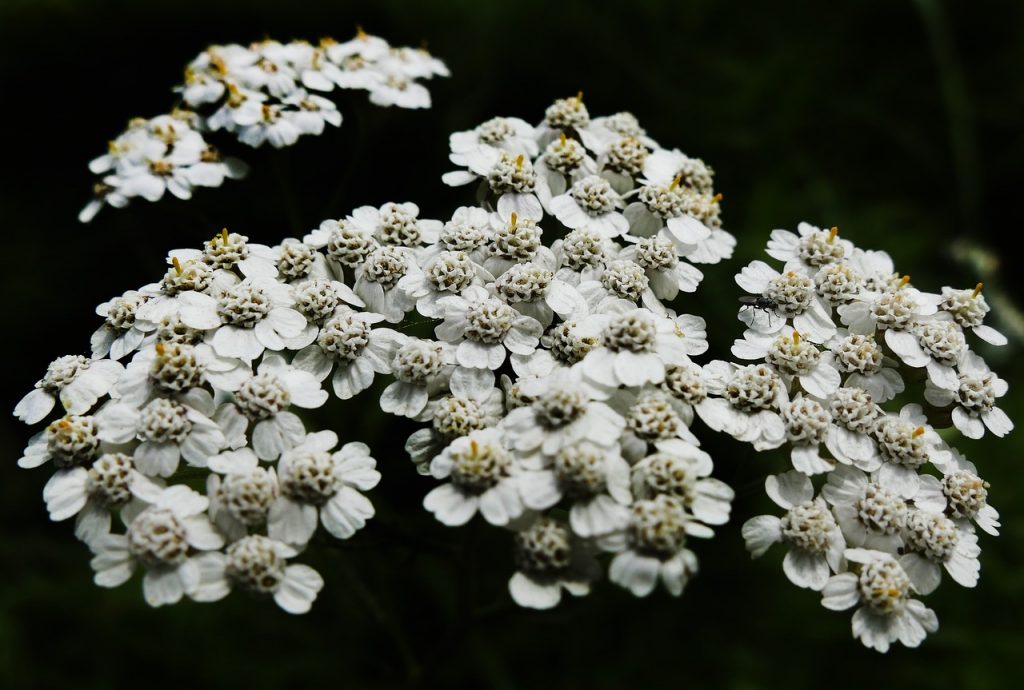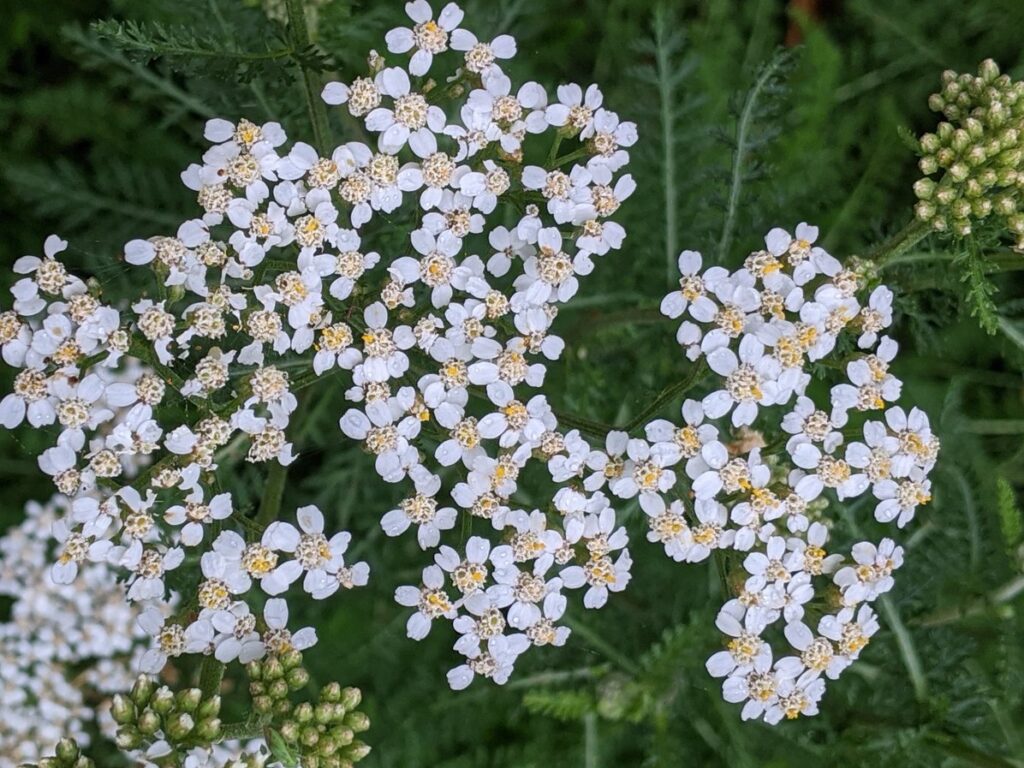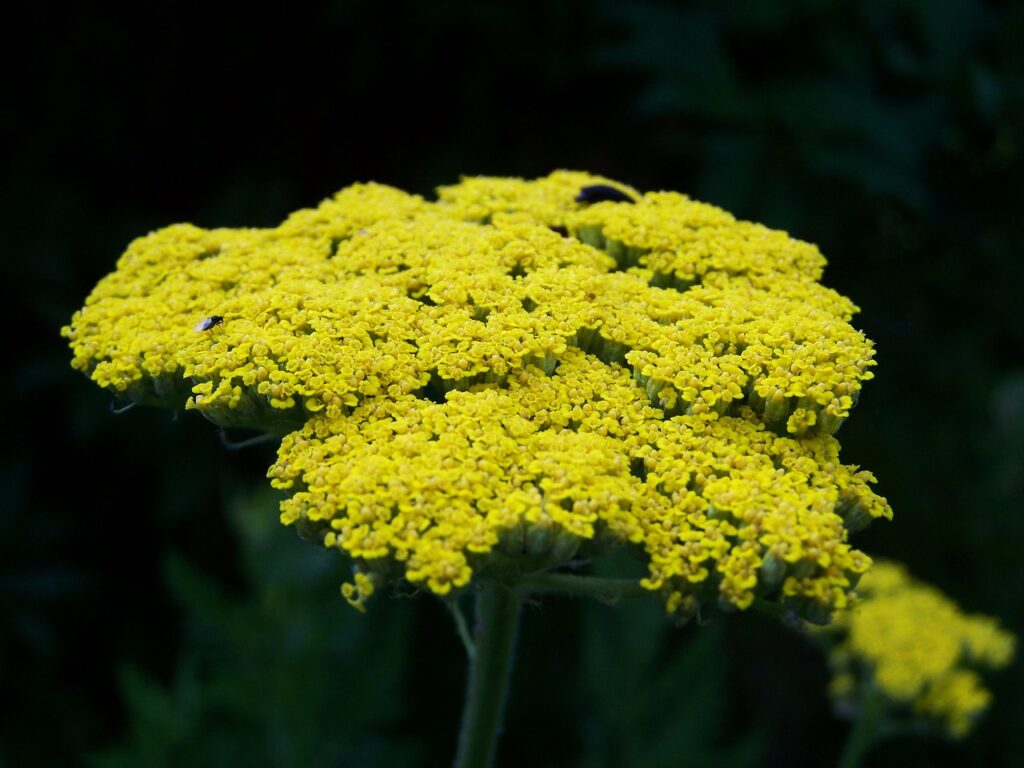There are plants you find only after long searching, and then there are those, like yarrow, that seem to find you. I remember stumbling across a patch of yarrow on a gravelly roadside, its feathery green leaves and soft clusters of white blossoms standing firm against the breeze. To the untrained eye, yarrow might seem like just another wildflower. But to wanderers and herbalists, it’s a living legend—a healer that has traveled hand-in-hand with humankind for thousands of years.

An Herb with Warrior Roots (and a Scientist’s Approval)
Yarrow’s story goes back to the days of Achilles, who, legend claims, used it to heal the wounds of warriors on the battlefield. In truth, the botanical name—Achillea millefolium—is a nod to that ancient myth. Across Europe and Asia, wherever people have faced the sting of cuts, scrapes, or fevers, yarrow was never far away.
Modern science has since uncovered the reasons behind yarrow’s reputation. The plant contains a volatile oil rich in compounds like azulene and achilleine, which have anti-inflammatory, astringent, and even mild antiseptic effects. It can help stop bleeding, ease digestive upsets, and soothe inflamed tissues—making yarrow a true multitasker, as much at home in a forager’s pocket as in a research lab.
Bringing Yarrow Home: Gardening and Wildcrafting
If you’re looking to cultivate resilience in your garden, yarrow is your friend. This perennial thrives in poor, well-drained soil and sun, though it will tolerate a bit of neglect and even dry, rocky spots where little else grows. To start your own patch, sow seeds or plant divisions in spring or autumn. Water only to establish—after that, yarrow is drought-tolerant and self-sufficient, spreading easily via its roots.
But don’t be surprised if you meet yarrow in the wild. Native to Europe and Asia, it has since naturalized across North America, popping up along roadsides, in meadows, and even in urban lots. Its finely divided leaves and sturdy white flowers are easy to spot once you know what you’re looking for.
Yarrow in Everyday Life
In my travels, I’ve used yarrow for everything from field-dressing a scraped knee to mixing a bitter tea when fever hit on a cold, wet night. A handful of fresh aerial parts, pressed against a cut, can slow bleeding fast. Blended with elderflower and peppermint, yarrow makes a classic remedy for colds and flu—warming, soothing, and gently bitter.
There’s an old comfort in knowing that wherever you roam, yarrow might be blooming quietly at your feet, ready to offer its ancient gifts to those who notice.



Yarrow Fact Sheet
- Botanical Name: Achillea millefolium (Yarrow, Milfoil)
- Active Compounds: Volatile oil (linalool, camphor, azulene), flavonoids, alkaloids (achilleine), tannins, and more
- Parts Used: Aerial parts (flowers, leaves, stems)
- Traditional Uses: Stops bleeding, soothes wounds, promotes menstruation, relieves inflammation, eases fevers and colds, digestive support, supports circulation
- Modern Science: Confirms anti-inflammatory, astringent, antispasmodic, and mild antiseptic effects; supports wound healing and circulatory health
- How to Grow:
- Plant seeds or divisions in spring/autumn
- Prefers full sun and well-drained soil
- Drought tolerant, spreads easily
- Harvest in summer when in flower
- Plant seeds or divisions in spring/autumn
- Where It Grows Wild:
- Native to Europe/Asia
- Widely naturalized in North America and other temperate regions; common on roadsides, meadows, disturbed soils
- Native to Europe/Asia
- Preparations:
- Tea (alone or blended with peppermint/elderflower for colds)
- Tincture
- Poultice (for wounds/bruises)
- Essential oil (for topical use)
- Tea (alone or blended with peppermint/elderflower for colds)
- Cautions:
- Rare allergic reactions possible
- Use essential oil only with professional guidance
- Rare allergic reactions possible
***Always consult with a healthcare provider before using new herbal remedies, especially if you have allergies or underlying conditions.***

Leave a Reply